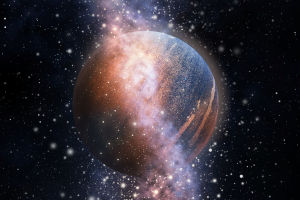The beautiful night sky and the bright stars are always imaginative. The universe is boundless, and now we estimate that the number of stars exceeds a trillion. The universe is so amazing, often beyond our imagination. It's also surprising how far the stars are from us. The most beautiful objects that can be seen through a telescope are nebulae.
In most places in the Milky Way, there is an extreme vacuum, with very little hydrogen and helium mixed with dust. Dense clusters of gas and dust make up nebulae, most of which can be seen in the night sky. If you go into space, you can see such a beautiful scene, and the starry sky you see will shine even more.
On clear, cloudless nights, we see stars. But the stars are not motionless, they will keep twinkling, as if blinking. So, why does this picture appear? Because starlight is a point source of light, as the light they emit passes through the Earth's atmosphere, the air is not uniformly hot and cold, which leads to changes in density. This is like a small lens, and it is through the "lens" that the starlight will appear flickering.
The stars are always in the sky, they don't appear at night, they exist during the day, we can't see it because part of the sun's light is scattered by the earth's atmosphere during the day, and these lights make the sky very bright. Directly overshadowed the faint starlight. When there is no atmosphere and the sky is dark, we can see stars during the day.
The Milky Way is a massive star system with more than 200 billion stars. The sun is an ordinary member of the Milky Way. Almost all the stars we see are members of the Milky Way. Due to the influence of the earth's atmosphere and interstellar matter, as well as the limitations of human vision, more than 6,000 stars can be seen throughout the year, accounting for only a small fraction of the stars in the Milky Way.
To measure the brightness and darkness of stars, astronomers came up with the concept of magnitude. The smaller the magnitude, the brighter the star; the larger the magnitude, the dimmer the star. Hipparchus, a Greek astronomer who lived in the 2nd century BC, was the first to classify the brightness of stars. He once did a catalog. In the star catalog, he defined the 20 brightest stars as first-magnitude stars, and the stars visible to the naked eye as sixth-magnitude stars. Then he divided the first- and sixth-magnitude stars into four grades. This classification method is still in use today. The faintest star visible to the naked eye is magnitude 6, with more than 4,000 stars; stars 100 times brighter than magnitude 6 are magnitude 1 stars.
On Earth, the number of stars seen is related to geographic latitude. At the high latitudes of the north and south poles, the sky area is smallest. At the North Pole, you can only see the stars in the northern half of the sky, and at the South Pole, you can only see the stars in the southern half of the sky. As the latitude decreases, more and more sky can be seen, and more and more stars can be seen. At the equator, you can see the sky full of stars.


